Repurpose Old Windows into a Chic Greenhouse
Are you a gardening enthusiast looking to add a touch of style and sustainability to your outdoor space? If so, repurposing old windows into a chic greenhouse might just be the perfect project for you! Imagine transforming those dusty, forgotten windows into a vibrant haven for your plants, where they can bask in the sunlight while you enjoy the beauty of nature right at your fingertips. This article explores creative ways to transform old windows into a stylish and functional greenhouse, providing a sustainable solution for gardening enthusiasts looking to enhance their outdoor space.
Repurposing old windows offers numerous advantages that go beyond mere aesthetics. First and foremost, it can lead to significant cost savings. Instead of splurging on brand new materials, you can breathe new life into windows that would otherwise end up in a landfill. This not only saves you money but also contributes to environmental sustainability, making your gardening practices more eco-friendly.
Furthermore, old windows come with their own unique charm that can add a distinctive flair to your greenhouse. Each window tells a story, and when combined, they create a one-of-a-kind structure that reflects your personality and style. The character of vintage windows can transform a simple greenhouse into an eye-catching focal point in your garden.
Not all windows are suitable for greenhouse projects, and choosing the right ones is crucial for your success. When selecting old windows, consider several key factors:
- Size: Ensure the windows are large enough to allow ample light for your plants.
- Condition: Look for windows that are structurally sound and free from rot or extensive damage.
- Material: Different materials have different properties that can affect insulation and durability.
When it comes to repurposing windows, there are various types to consider, each with its own pros and cons:
| Type of Window | Pros | Cons |
|---|---|---|
| Single-pane | Lightweight, easy to find | Poor insulation |
| Double-pane | Better insulation, energy-efficient | Heavier, may be more expensive |
| Casement | Great ventilation, easy to open | Can be tricky to seal |
When considering window materials, both wood and vinyl have distinct benefits. Wood windows offer excellent insulation and a classic look, but they require regular maintenance to prevent rot and weather damage. On the other hand, vinyl windows are durable and low-maintenance, but they may lack the aesthetic appeal of wood. Think about your personal style and how much upkeep you're willing to commit to when making your choice.
Discovering old windows for your project can be easier than you think! Here are some tips on where to look:
- Salvage yards: These places often have a treasure trove of windows at affordable prices.
- Online marketplaces: Websites like Craigslist or Facebook Marketplace can yield great finds.
- Community exchanges: Local groups or forums may have members looking to sell or give away old windows.
Before diving into your greenhouse project, proper preparation of the windows is essential. Start by giving them a thorough cleaning to remove dirt and grime. Next, inspect each window for any damage, such as broken glass or rotting wood. Repair any issues and ensure that all seals are intact to prevent drafts. Finally, consider applying a weatherproof sealant to protect your windows from the elements, ensuring they are ready for outdoor use.
Creating a chic greenhouse is not just about functionality—it's also about aesthetics! Consider the following design ideas to help you visualize your project:
The layout of your greenhouse can greatly influence its functionality. Think about whether you want a lean-to greenhouse attached to an existing structure or a freestanding model that can be placed anywhere in your garden. Each option has its own advantages, and your choice will depend on your available space and gardening needs.
To enhance your greenhouse's usability, consider incorporating extra features such as:
- Shelving: Create space for potted plants and gardening tools.
- Ventilation: Ensure proper airflow to keep plants healthy.
- Rainwater collection systems: Make your greenhouse more sustainable by collecting rainwater for irrigation.
Once your greenhouse is established, regular maintenance is crucial for its longevity. Here are some practical tips:
- Regularly clean the windows to maximize sunlight exposure.
- Inspect for any signs of damage or wear and address them promptly.
- Rotate your plants and change the soil as needed to promote healthy growth.
Q: Can I use any old window for my greenhouse?
A: Not all windows are suitable. Look for windows that are in good condition and provide adequate insulation.
Q: How much does it cost to build a greenhouse with old windows?
A: Costs can vary significantly based on the number of windows you use and any additional materials needed, but repurposing old windows can save you a lot compared to buying new ones.
Q: Do I need to treat the wood in wooden windows?
A: Yes, treating the wood with a weatherproof sealant can help prolong its life and prevent damage from moisture.
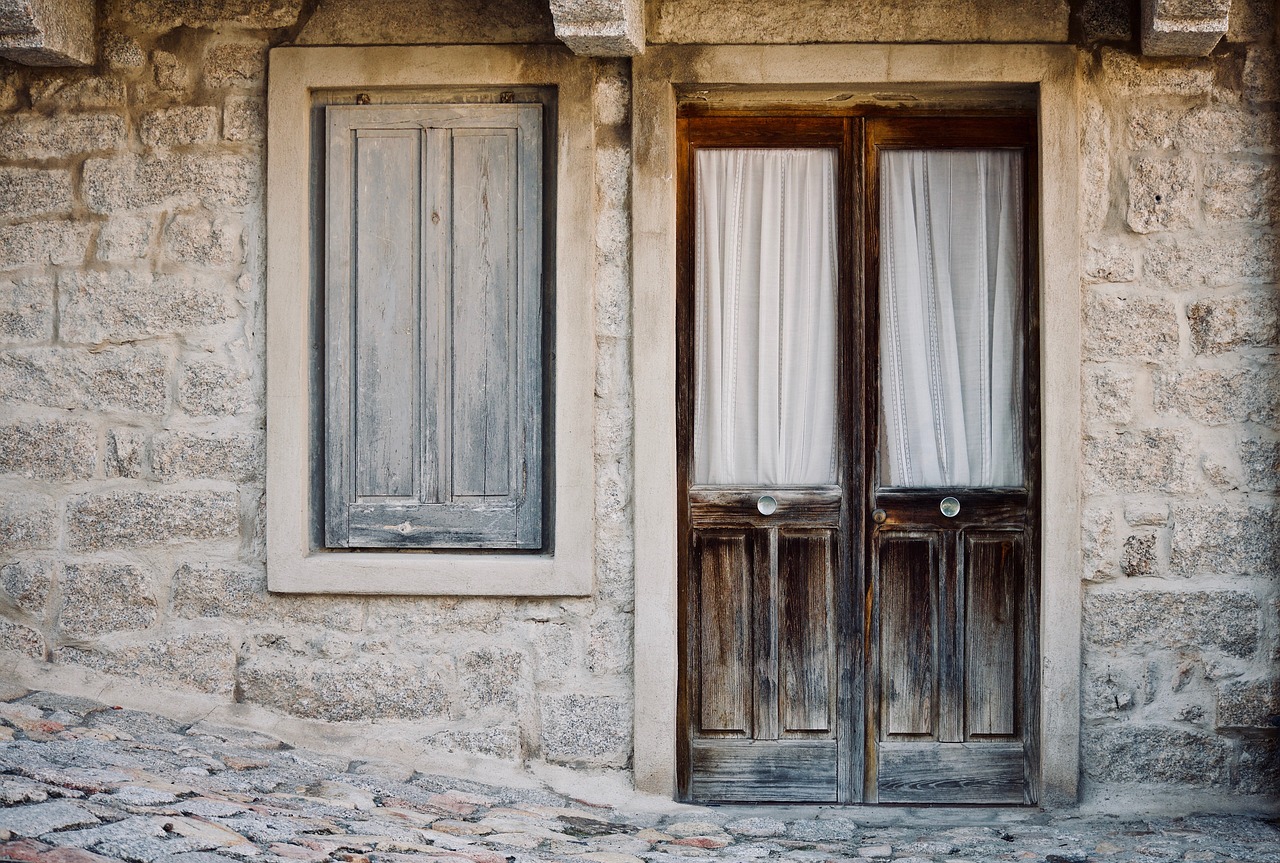
Benefits of Using Old Windows
Repurposing old windows into a chic greenhouse is not just a trend; it's a fantastic way to embrace sustainability while adding charm to your garden. One of the most significant benefits of using old windows is the cost savings involved. Instead of spending a fortune on new materials, you can often find discarded or surplus windows at a fraction of the price. This not only helps your wallet but also minimizes waste, contributing to a more eco-friendly approach to gardening.
Moreover, using old windows allows you to create a unique aesthetic appeal that new materials simply can't replicate. Each window has its own character, with variations in color, texture, and style. Imagine crafting a greenhouse that tells a story with its eclectic mix of frames! This distinctive look can enhance your garden's beauty and make it a focal point for visitors.
In addition to aesthetic benefits, repurposing windows also supports environmental sustainability. By choosing to upcycle rather than purchase new, you're reducing the demand for new materials, which in turn decreases the environmental impact associated with manufacturing and transportation. This practice aligns perfectly with the principles of reduce, reuse, and recycle, making your gardening efforts more responsible and conscientious.
Furthermore, old windows can provide excellent insulation when properly sealed and arranged. This means that your greenhouse can maintain a stable temperature, protecting your plants from harsh weather conditions. The natural light filtering through the glass not only promotes plant growth but also creates a warm and inviting atmosphere for you to enjoy while tending to your garden.
In summary, the benefits of using old windows for your greenhouse project are multifaceted. From cost savings and unique aesthetics to environmental sustainability and improved insulation, these advantages make repurposing old windows a rewarding endeavor. So, why not dive into this creative project and transform your gardening experience?

Choosing the Right Windows
When it comes to transforming old windows into a chic greenhouse, choosing the right ones is crucial for both functionality and aesthetics. Not all windows are created equal, and understanding what makes a window suitable for your greenhouse project can make a world of difference. First and foremost, consider the size of the windows. Larger windows not only allow more light to filter through but also create a more spacious feel inside the greenhouse. However, if space is limited, smaller windows can still be effective when arranged creatively.
Next, the condition of the windows plays a significant role. Inspect each window for any signs of damage, such as cracks, rot, or broken seals. A window in poor condition might not only detract from the greenhouse's appearance but could also lead to energy inefficiency. Ideally, you want windows that are not only intact but also have good insulation properties. This brings us to the material of the windows. Wood and vinyl are the most common materials, each with its pros and cons.
Wooden windows offer a classic and rustic charm, perfect for a traditional greenhouse aesthetic. However, they require regular maintenance to prevent rot and decay, especially in humid environments. On the other hand, vinyl windows are often more durable and require less upkeep, making them a practical choice for those who want a low-maintenance option. When deciding between these materials, think about your local climate and how much time you’re willing to invest in maintenance.
It’s also wise to consider the type of window you want to use. Here are a few common types:
- Single-pane windows: Affordable and easy to find, but not very energy efficient.
- Double-pane windows: Better insulation and energy efficiency, though they may be harder to source.
- Casement windows: These can be opened fully to allow for ventilation, a crucial feature in a greenhouse setting.
Ultimately, the right windows for your greenhouse will depend on your specific needs and preferences. Take your time to evaluate each option, and don’t hesitate to mix and match types to achieve the best results. Remember, a well-thought-out choice will not only enhance the functionality of your greenhouse but also contribute to its overall visual appeal.
Q1: Can I use any old window for my greenhouse project?
A1: While many old windows can be repurposed, it's important to consider their size, condition, and material to ensure they are suitable for greenhouse use.
Q2: What is the best material for greenhouse windows?
A2: Both wood and vinyl have their advantages. Wood offers a classic look but requires more maintenance, while vinyl is more durable and low-maintenance.
Q3: Where can I find old windows for my project?
A3: Salvage yards, online marketplaces, and community exchanges are great places to find old windows that can be repurposed.
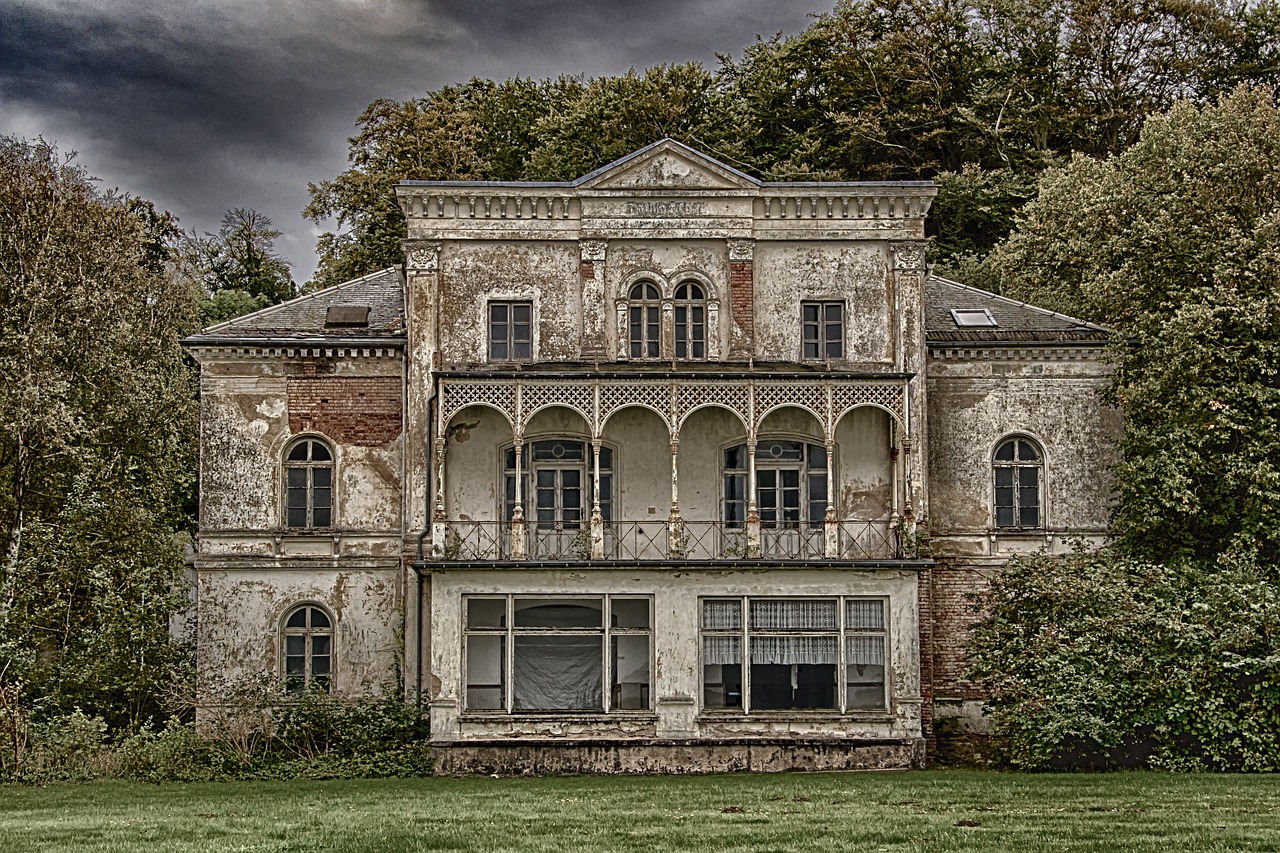
Types of Windows to Consider
When it comes to transforming old windows into a chic greenhouse, it's essential to consider the types of windows available to you. Each type brings its own set of advantages and disadvantages that can affect the overall functionality and aesthetic of your greenhouse. Let's dive into the most common types of windows you might encounter and how they can impact your gardening haven.
First up, we have single-pane windows. These are typically the most affordable option and can be found in abundance at salvage yards or online marketplaces. However, they come with a significant downside: they offer minimal insulation. If you live in a region with extreme temperatures, single-pane windows might not retain heat effectively, which could hinder your plants' growth during colder months. On the bright side, they are lightweight and easy to handle, making them a fantastic choice for DIY enthusiasts looking for a budget-friendly option.
Next, let’s talk about double-pane windows. These windows consist of two layers of glass with a space in between, providing better insulation than their single-pane counterparts. While they are generally more expensive, their ability to maintain a stable temperature inside the greenhouse makes them worth the investment, especially for those living in colder climates. However, keep in mind that double-pane windows may be heavier and require a sturdier frame to support their weight.
Another option to consider is casement windows. These windows are hinged on one side and open outward, allowing for excellent ventilation. Ventilation is crucial in a greenhouse to prevent overheating and promote healthy plant growth. Casement windows can be a bit more challenging to find, but they offer a unique aesthetic and functional benefit that can enhance your greenhouse experience.
To help you visualize the differences, here's a quick comparison table:
| Type of Window | Insulation | Weight | Ventilation | Cost |
|---|---|---|---|---|
| Single-Pane | Low | Lightweight | Limited | Low |
| Double-Pane | High | Heavier | Moderate | Medium |
| Casement | Variable | Moderate | Excellent | Medium to High |
Ultimately, the choice of windows will depend on your specific needs, budget, and climate conditions. Consider how much sunlight your greenhouse will receive, the types of plants you wish to grow, and how much maintenance you are willing to perform. Each window type has its unique charm, and by selecting the right one, you can create a greenhouse that not only looks stunning but also serves as a productive space for your gardening endeavors.
In conclusion, whether you opt for the budget-friendly single-pane windows, the energy-efficient double-pane designs, or the airy casement windows, each choice will contribute to the character and functionality of your greenhouse. So, take a moment to weigh your options and envision how these windows can transform your outdoor space into a lush, green paradise.
Q: Can I use any type of old window for my greenhouse?
A: While many types of old windows can be repurposed, it's essential to consider their insulation properties and structural integrity. Single-pane windows may not be suitable for colder climates, while double-pane and casement windows can provide better temperature control.
Q: Where can I find old windows?
A: You can find old windows at salvage yards, online marketplaces, community exchanges, and even through local classifieds. Always check the condition of the windows before purchasing.
Q: How do I ensure my old windows are safe for greenhouse use?
A: Before using old windows, clean them thoroughly, check for cracks or damages, and seal any gaps to prevent moisture from entering. Proper preparation is key to ensuring your greenhouse is safe and functional.
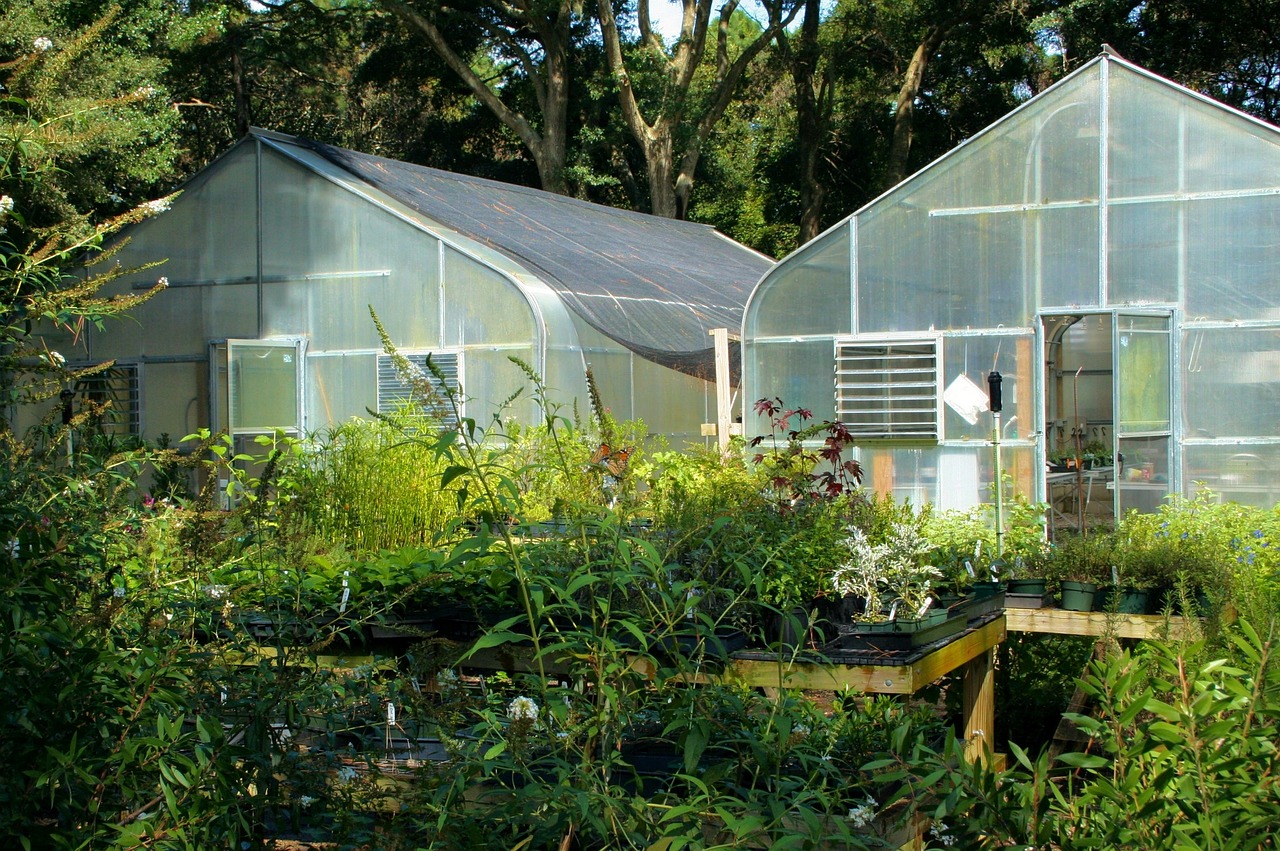
Wood vs. Vinyl Windows
When it comes to choosing the right materials for your greenhouse, one of the biggest decisions you'll face is whether to go with wood or vinyl windows. Each option has its own set of advantages and disadvantages, and understanding these can help you make an informed choice that aligns with your gardening goals and aesthetic preferences.
Wood windows are often celebrated for their natural beauty and classic charm. They bring a warm, rustic feel to any greenhouse, making it not just a functional space but also an attractive one. However, they do require more maintenance than vinyl. Wood can be prone to rot, especially in humid climates, and it may need to be painted or sealed regularly to protect it from the elements. On the plus side, wood has excellent insulating properties, which can help maintain a stable temperature inside your greenhouse.
On the other hand, vinyl windows are known for their durability and low maintenance requirements. They won’t warp, crack, or rot like wood, making them a more resilient option for outdoor use. Vinyl is also energy-efficient, providing good insulation and helping to keep your greenhouse warm during colder months. However, some people find vinyl less visually appealing than wood, as it can lack the same aesthetic warmth and character. Additionally, vinyl windows can be more limited in terms of design options compared to their wooden counterparts.
To help you visualize the differences, here’s a quick comparison:
| Feature | Wood Windows | Vinyl Windows |
|---|---|---|
| Durability | Moderate (requires maintenance) | High (low maintenance) |
| Insulation | Excellent | Good |
| Aesthetic Appeal | Warm and classic | Modern and functional |
| Cost | Generally higher | Generally lower |
Ultimately, the choice between wood and vinyl windows for your greenhouse boils down to your personal preferences, budget, and the specific climate conditions in your area. If you’re looking for a traditional look and don’t mind a bit of upkeep, wood might be the way to go. However, if you prefer a low-maintenance, durable option, vinyl could be your best bet. Remember, your greenhouse is not just a place to grow plants; it’s an extension of your home and a reflection of your style!
Q: How do I decide which type of window is best for my greenhouse?
A: Consider your budget, maintenance preferences, and the aesthetic you want to achieve. If you love the look of wood and don’t mind the upkeep, go for it! If you want something that’s easy to care for, vinyl might be your best option.
Q: Can I mix wood and vinyl windows in my greenhouse?
A: Yes, it’s possible to mix different types of windows, but keep in mind that this may affect the overall look and insulation of your greenhouse.
Q: How often do I need to maintain wood windows?
A: Wood windows typically require maintenance every few years, including repainting or resealing to protect them from moisture and pests.
Q: Are vinyl windows energy-efficient?
A: Yes, vinyl windows are generally considered energy-efficient and can help keep your greenhouse warm while reducing heating costs.

Finding Old Windows
Finding old windows for your greenhouse project can be an exciting treasure hunt! It's all about knowing where to look and having a keen eye for potential. Many people underestimate the value of old windows, but they can be found in a variety of places. Think of it as a fun scavenger hunt where each find can bring you one step closer to your dream greenhouse.
One of the best places to start your search is at local salvage yards. These places are gold mines for all sorts of building materials, and you can often find windows in various sizes and styles. Not only will you be saving money, but you'll also be contributing to a sustainable approach by giving these windows a second life. When rummaging through salvage yards, don't forget to check for any cracks or damages; a little inspection goes a long way!
Another great resource is online marketplaces. Websites like Craigslist, Facebook Marketplace, and even eBay can have listings for old windows. You can often find sellers who are looking to offload their old materials for a reasonable price. Plus, the convenience of shopping from home means you can browse multiple options without any hassle. Just remember to ask for detailed photos and descriptions to ensure you're getting quality windows.
Community exchanges and local buy/sell groups can also be a fantastic avenue. Many neighborhoods have online groups where residents can post items they no longer need. You might be surprised at how many people are looking to get rid of their old windows! It's a win-win situation: you get the materials you need, and someone else declutters their space.
Lastly, consider reaching out to construction companies or contractors. They often have leftover materials from previous projects that they are willing to sell or donate. Building relationships with local builders can open up opportunities to source quality windows that are just waiting for a new purpose.
In summary, finding old windows doesn't have to be a daunting task. With a little creativity and effort, you can uncover hidden gems that will add character and charm to your greenhouse. Just remember to keep an open mind and be patient; the perfect windows are out there waiting for you!
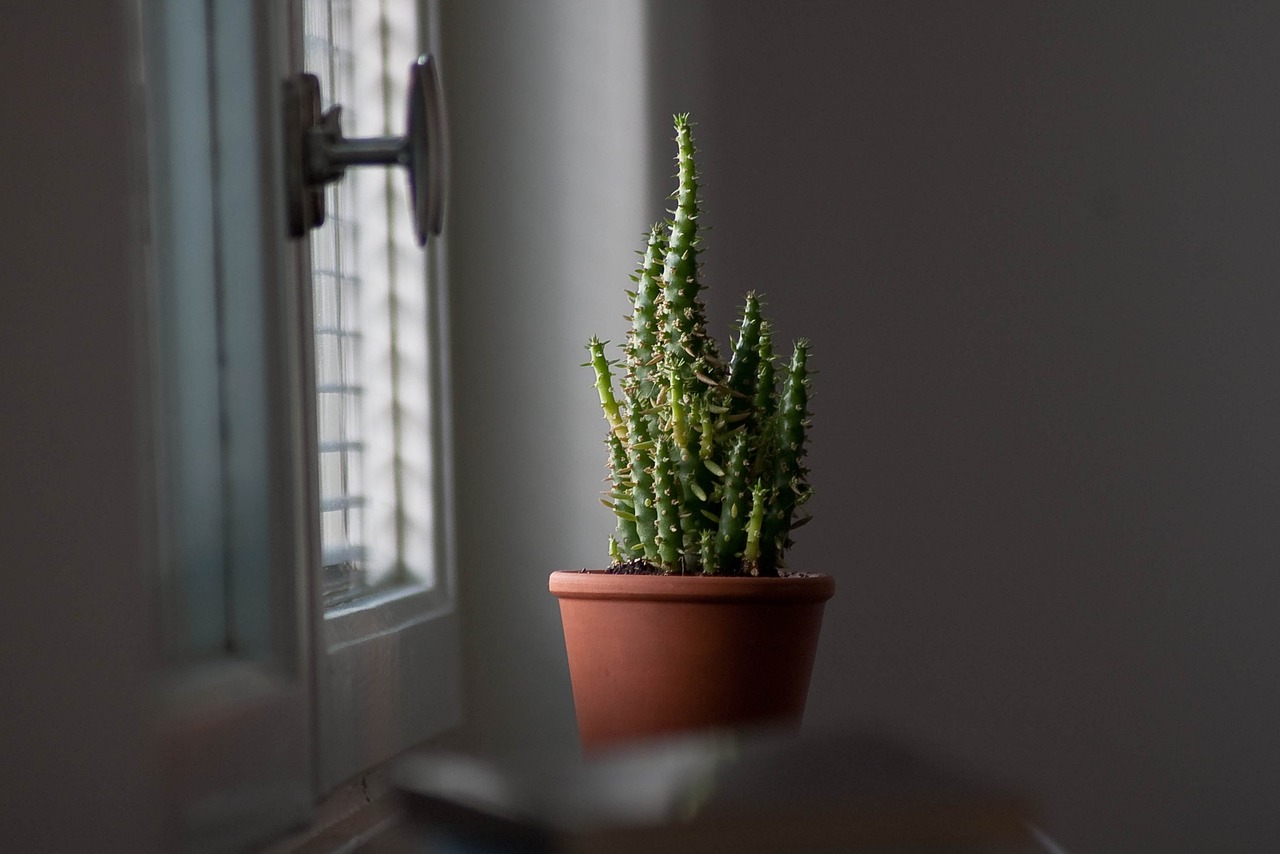
Preparing Windows for Repurposing
Before diving headfirst into your exciting greenhouse project, it’s absolutely essential to prepare your old windows properly. Think of it like prepping a canvas before painting; you wouldn’t want to start without first ensuring it’s clean and primed, right? The same principle applies here. First things first, you’ll want to clean your windows thoroughly. This means removing any dirt, dust, or debris that may have accumulated over the years. A simple mixture of soap and water will do wonders. Don’t forget to check the corners and crevices—those sneaky spots can harbor grime!
After cleaning, it’s time to inspect the windows for any damage. Look for cracks in the glass, rotting wood, or rust on metal frames. If you discover any broken panes, you might need to replace them or, if you’re feeling adventurous, consider using a glass repair kit. For wooden frames, sand down any rough spots and apply a protective sealant to prevent further decay. If you’re dealing with vinyl windows, a good wash and a check for any warping or cracks should suffice.
Next up is sealing. This step is crucial, especially if you want your greenhouse to withstand the elements. Use a quality caulk to seal any gaps or cracks around the frames. This not only enhances the durability of your greenhouse but also improves insulation, ensuring that your plants are cozy and protected from harsh weather. Remember, a well-sealed greenhouse is like a warm hug for your plants!
Finally, consider giving your windows a fresh coat of paint or stain. This isn’t just for aesthetics; it also adds another layer of protection against the elements. Choose a color that complements your garden, and don’t be afraid to get creative! After all, this is your personal sanctuary, and you want it to reflect your unique style.
In summary, preparing your windows for repurposing involves a few key steps: cleaning, inspecting for damage, sealing, and possibly painting. By taking the time to properly prepare your windows, you’ll ensure that your greenhouse not only looks fabulous but also functions effectively for years to come. Now, let’s get those windows ready to transform your gardening dreams into reality!
- What types of windows are best for a greenhouse? Generally, double-pane windows offer better insulation, but single-pane windows can also work well if sealed properly.
- How do I find old windows? Check local salvage yards, online marketplaces, and community exchanges for affordable options.
- Can I use broken windows? It’s best to repair or replace broken windows to maintain the integrity and safety of your greenhouse.
- Do I need to treat wooden windows? Yes, treating wooden windows with a sealant will help prevent rot and extend their lifespan.
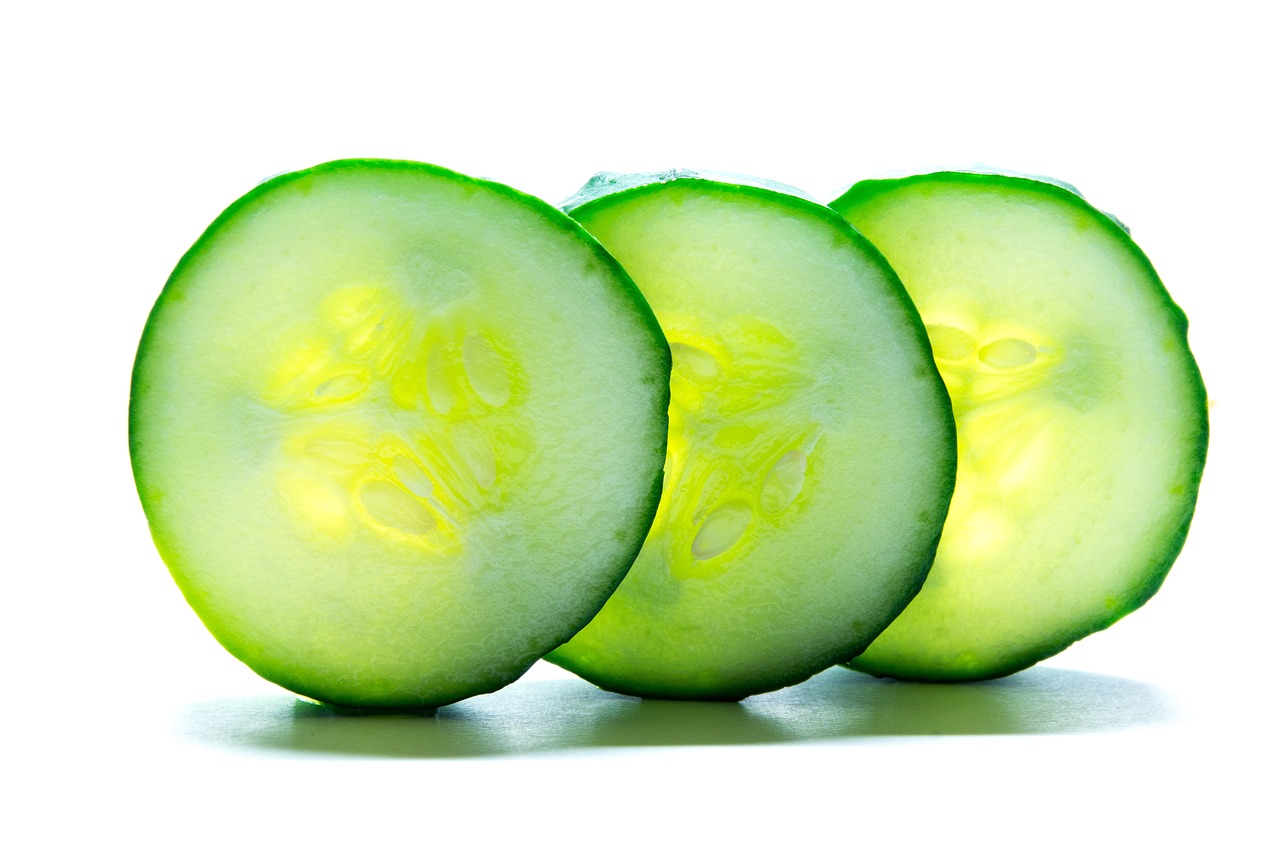
Design Ideas for Your Greenhouse
When it comes to creating a chic greenhouse, the design is just as important as the materials you use. A well-thought-out design can transform your old windows into a stunning focal point in your garden while providing the perfect environment for your plants to thrive. Imagine stepping into a space filled with greenery, sunlight streaming through the glass, and the sweet scent of blooming flowers. Sounds dreamy, right? Well, let’s dive into some design ideas that can help you achieve this vision.
First off, consider the layout of your greenhouse. The way you arrange your windows can significantly impact how light enters and how space is utilized. For instance, a lean-to greenhouse can be an excellent choice if you have limited space. It utilizes one wall of your house or another structure, allowing you to maximize sunlight exposure while saving space. On the other hand, a freestanding model can be strategically placed in your yard to catch the most sunlight throughout the day. Think about the sun’s path and how it will influence your plants’ growth.
Next, let’s talk about the structure. The beauty of using old windows is that they come in various shapes and sizes, which can add character to your greenhouse. You can create a unique asymmetrical design by mixing different window styles. Imagine a quirky greenhouse that looks like a patchwork quilt of glass! Alternatively, if you prefer a more uniform look, you can use windows of the same style and size for a clean, modern aesthetic. Don’t forget to incorporate a sturdy frame to support your windows, ensuring that your greenhouse is both safe and stylish.
In addition to the basic structure, think about incorporating additional features that enhance both functionality and aesthetics. For example, adding shelving can help you organize your plants and gardening tools while providing a visually appealing display. You might also want to include a ventilation system to regulate temperature and humidity, which is crucial for plant health. A simple window opening mechanism can work wonders. And let’s not forget the charm of a small rainwater collection system—not only is it eco-friendly, but it can also add a rustic touch to your greenhouse.
Finally, consider the interior design of your greenhouse. You can create a cozy atmosphere by adding comfortable seating, decorative pots, and even fairy lights for a magical evening ambiance. The interior can be as simple or as elaborate as you desire. Think of it as an extension of your home, a place where you can relax and enjoy the fruits of your labor. Whether you choose a minimalist approach with clean lines or a more bohemian vibe with colorful accents, the key is to make the space feel inviting and personal.
Remember, your greenhouse is a reflection of your personality and gardening style. With a little creativity and some elbow grease, you can turn those old windows into a chic greenhouse that not only serves a purpose but also becomes a beautiful addition to your outdoor space.
Q: Can I use any type of old window for my greenhouse?
A: While many types of windows can be repurposed, it's essential to consider their condition, material, and how they will fit into your design. Single-pane windows are often less energy-efficient, while double-pane windows provide better insulation.
Q: How do I ensure my greenhouse is well-ventilated?
A: Incorporating windows that can open is crucial for ventilation. You can also consider adding vents near the roof to allow hot air to escape, ensuring a comfortable environment for your plants.
Q: What features should I include for optimal plant growth?
A: Aside from proper ventilation, include shelves for organization, a rainwater collection system for sustainability, and consider using materials that provide adequate insulation to protect your plants from extreme temperatures.

Layout and Structure
When it comes to creating a chic greenhouse from repurposed old windows, the are absolutely crucial. Think of your greenhouse as a blank canvas where you can express your gardening dreams. The layout not only affects how you utilize the space but also influences the amount of sunlight your plants receive, which is vital for their growth. So, how do you decide on the best structure for your greenhouse? Let’s dive into some exciting options!
One popular choice is the lean-to greenhouse. This design is perfect if you have limited space, as it can be attached to the side of your house or any existing structure. Imagine your greenhouse basking in the sun, with the warmth of your home providing additional heat during those chilly nights. Lean-to greenhouses are often easier to construct, and they can create a cozy little microclimate for your plants. However, keep in mind that the wall you attach it to should receive ample sunlight throughout the day.
On the other hand, if you have more space to play with, a freestanding greenhouse might be the way to go. This type allows for greater flexibility in design and can be placed anywhere in your yard. You can let your creativity run wild! Freestanding greenhouses can be built in various shapes, such as rectangular, octagonal, or even dome-shaped. Each shape has its own charm and can create a stunning visual in your garden. Plus, a freestanding design allows for maximum light exposure from all angles, which is a huge plus for your plants.
Another structural consideration is the height of your greenhouse. A taller greenhouse can accommodate larger plants and allows for better air circulation, which is essential for preventing diseases. However, it’s important to balance height with stability. If your greenhouse is too tall and not properly anchored, it may be vulnerable to strong winds. So, if you’re dreaming of a grand greenhouse, make sure to reinforce it adequately!
When planning your layout, think about the flow of space inside the greenhouse. You want to create a functional area where you can easily access your plants, tools, and supplies. Consider incorporating pathways between your plants to make watering and maintenance a breeze. You might also want to include workspaces for potting and transplanting. A well-thought-out layout can transform your greenhouse from just a structure into a delightful gardening oasis!
Incorporating elements like shelves and tables can help maximize your growing area. Vertical gardening is a hot trend right now, and shelves can provide additional space for seedlings or herbs. Just imagine a beautiful array of plants cascading down from your shelves, creating a lush and vibrant atmosphere. If you have the room, adding a small table can serve as a potting station, making your gardening tasks more organized and enjoyable.
Lastly, don't forget about ventilation! Proper airflow is essential for maintaining a healthy environment for your plants. Consider installing windows that can be opened or using vents at the top of your greenhouse to allow hot air to escape. This way, you can keep the temperature regulated and create a comfortable home for your plants.
In summary, the layout and structure of your greenhouse are key to its success. Whether you opt for a lean-to or freestanding design, remember to consider factors like sunlight, height, and airflow. With a little creativity and planning, you can create a stunning greenhouse that not only looks chic but also provides an ideal environment for your plants to thrive!
- What materials are best for building a greenhouse? While old windows are fantastic, you can also use polycarbonate panels or glass for better insulation.
- How do I ensure my greenhouse is stable? Use sturdy foundations and secure your structure with proper anchoring techniques to withstand wind and weather.
- Can I grow vegetables in a greenhouse? Absolutely! Greenhouses are perfect for growing a variety of vegetables, herbs, and even flowers.

Incorporating Additional Features
When it comes to creating a chic greenhouse from repurposed old windows, the magic truly happens when you start thinking about additional features that can elevate both the functionality and aesthetics of your space. Imagine walking into your greenhouse, not just greeted by the sight of thriving plants, but also by a well-organized and efficient environment that enhances your gardening experience. Adding features such as shelving, ventilation systems, and rainwater collection can transform your greenhouse from a simple structure into a thriving oasis.
First off, let's talk about shelving. Having shelves in your greenhouse is like having a personal assistant for your plants. They allow you to maximize vertical space, making it easier to organize your plants and tools. You can create a tiered shelving system using reclaimed wood or even additional window frames, which not only saves money but also adds a rustic charm to your greenhouse. Imagine rows of vibrant herbs and flowers cascading down the shelves, creating a stunning visual display!
Next, consider the importance of ventilation. Proper airflow is crucial for your plants to thrive, especially during those hot summer months. You can incorporate adjustable windows or small vents that can be opened to allow fresh air to circulate. This is particularly important if you're using double-pane windows, as they can trap heat. By ensuring good ventilation, you not only keep your plants healthy but also make your greenhouse a more comfortable space for you to spend time in.
Another fantastic feature to think about is a rainwater collection system. This eco-friendly addition can significantly reduce your water bill while providing a sustainable source of hydration for your plants. You can easily set up a rain barrel beneath your greenhouse's eaves to catch runoff water. Not only does this feature promote sustainability, but it also adds a touch of charm to your garden setup. Plus, there's nothing quite like watering your plants with rainwater, which is often richer in nutrients than tap water!
To really bring your greenhouse to life, consider adding some decorative elements. Think about hanging pots, fairy lights, or even a small seating area where you can relax and enjoy the fruits of your labor. These personal touches can make your greenhouse feel like a true extension of your home, a sanctuary where you can escape from the hustle and bustle of everyday life.
Incorporating these additional features into your greenhouse not only enhances its functionality but also creates a unique space that reflects your personal style. So, as you embark on this exciting journey of transformation, remember that every little detail counts. Your greenhouse can be a beautiful blend of practicality and creativity, making it a delightful place for both you and your plants to thrive.
- What types of plants can I grow in a greenhouse made from old windows? You can grow a variety of plants, including herbs, vegetables, and flowers. The key is to ensure that your greenhouse has adequate light and ventilation.
- How can I ensure my old windows are safe for use? Check for any broken glass or rot in the frames. You may need to replace glass panes or treat wooden frames to prevent decay.
- What is the best location for my greenhouse? Choose a spot that receives plenty of sunlight throughout the day, ideally with some protection from harsh winds.
- Do I need to insulate my greenhouse? While old windows provide some insulation, adding extra insulation can help maintain a stable temperature, especially in colder climates.
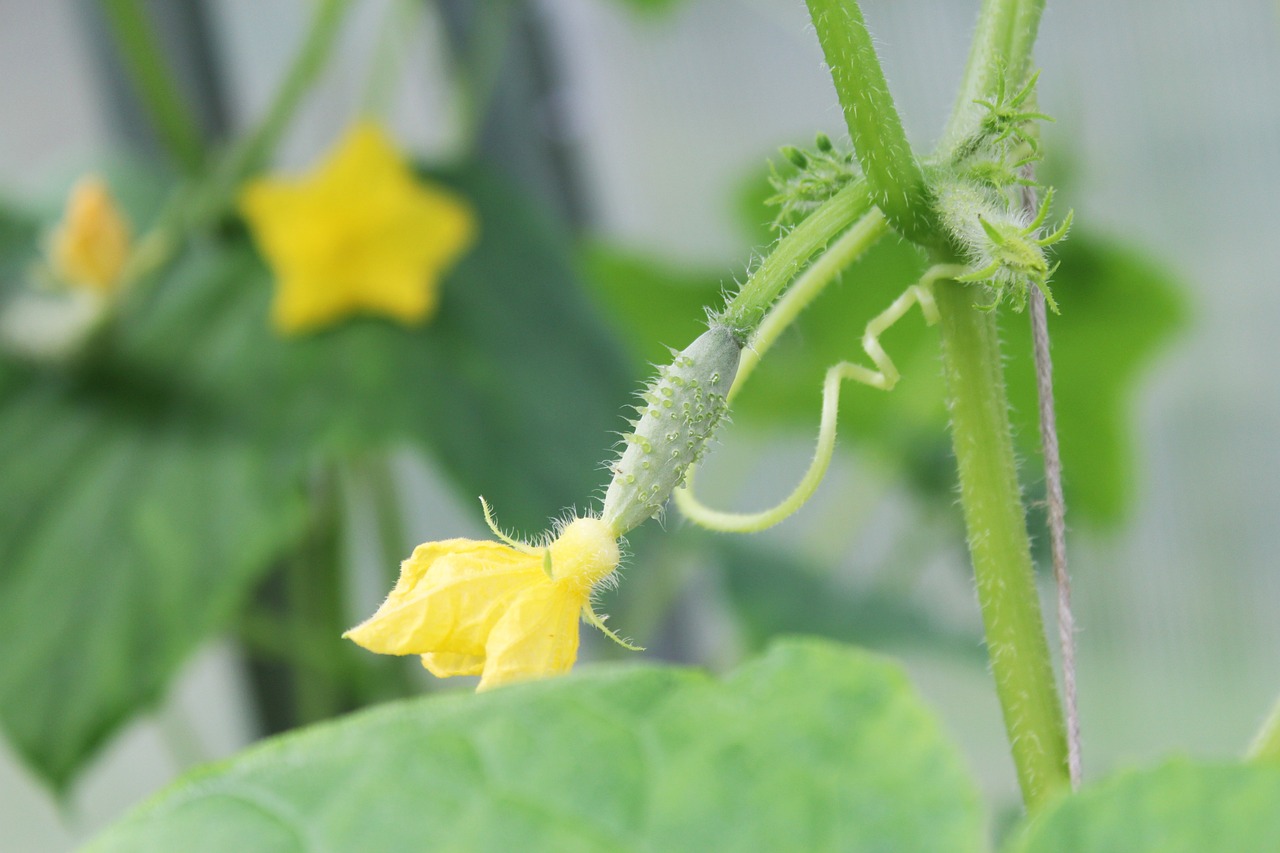
Maintenance Tips for Your Greenhouse
Once you've transformed your old windows into a stunning greenhouse, the journey doesn't end there! To keep your little slice of paradise thriving, regular maintenance is essential. Think of your greenhouse as a delicate ecosystem that requires a bit of love and attention to flourish. Just like a car needs oil changes and tire rotations, your greenhouse needs its own set of routine check-ups. So, what should you be on the lookout for?
First and foremost, cleaning is crucial. Dust, dirt, and debris can accumulate on the glass surfaces, blocking sunlight from reaching your plants. A good rule of thumb is to clean the windows at least twice a year—once in spring to prepare for the growing season and again in fall to remove any grime that may have built up over the summer. Use a gentle, eco-friendly cleaner to avoid any harmful chemicals that could affect your plants. A simple mixture of vinegar and water can work wonders!
Next, don't overlook the importance of inspecting your structure. Take the time to check for any signs of wear and tear. Look for cracks in the glass, loose hinges, or even rotting wood if you used wooden frames. Addressing these issues early can prevent more significant problems down the line. If you find a cracked pane, it's better to replace it sooner rather than later to maintain the greenhouse's integrity and insulation.
Another vital aspect of maintenance is ventilation. Just like us, plants need fresh air to thrive. Make sure your greenhouse has adequate ventilation to prevent overheating and humidity buildup. If your windows can open, regularly check to ensure they operate smoothly. You might also want to consider adding vents or fans to enhance air circulation, especially during the warmer months.
Lastly, don’t forget about seasonal care. Each season brings its own set of tasks. For instance, in winter, it’s essential to ensure that your greenhouse is adequately insulated to protect your plants from the cold. You might even want to invest in some thermal curtains or bubble wrap to provide extra warmth. Conversely, during the summer, shading techniques can help prevent overheating. Consider using shade cloth or strategically placing taller plants to provide some natural shade for your more delicate greens.
To summarize, here are some quick maintenance tips for your greenhouse:
- Clean windows regularly to ensure maximum sunlight.
- Inspect for damage and make necessary repairs.
- Ensure proper ventilation to keep air flowing.
- Adapt your care routine according to the seasons.
By keeping these maintenance tips in mind, you'll ensure that your greenhouse remains a vibrant and productive space for years to come. Remember, a little effort goes a long way in creating a flourishing environment for your plants!
Q: How often should I clean the windows of my greenhouse?
A: It's best to clean the windows at least twice a year—once in spring and once in fall. However, you can clean them more frequently if you notice dirt buildup.
Q: What should I do if I find a cracked window?
A: If you find a cracked window, replace it as soon as possible to maintain insulation and structural integrity. You can often find replacement glass at local hardware stores or online.
Q: How can I improve ventilation in my greenhouse?
A: You can improve ventilation by ensuring that windows can open easily, adding vents, or installing fans to promote air circulation.
Q: What are some winter care tips for my greenhouse?
A: Insulate your greenhouse with thermal curtains or bubble wrap, and ensure that your heating system is functioning properly to protect your plants from the cold.
Frequently Asked Questions
- What are the benefits of using old windows for a greenhouse?
Repurposing old windows not only saves you money but also contributes to environmental sustainability. You get to reduce waste while creating a unique and charming aesthetic for your garden. It's like giving a second life to something that would otherwise be discarded!
- How do I choose the right windows for my greenhouse project?
When selecting old windows, consider factors like size, condition, and material. Make sure the windows are intact and can withstand outdoor conditions. Think of it as picking the perfect ingredients for a recipe – the right choices can make a world of difference!
- What types of windows are best for a greenhouse?
Single-pane, double-pane, and casement windows all have their pros and cons. Single-pane windows are often cheaper but may not provide as much insulation, while double-pane windows offer better temperature control. Casement windows can be great for ventilation. It's all about finding the right balance for your needs!
- Are wood or vinyl windows better for greenhouse construction?
Wood windows offer great insulation and a classic look but require more maintenance. Vinyl windows are durable and low-maintenance but may not have the same aesthetic appeal. Think about your style and how much upkeep you're willing to handle!
- Where can I find old windows for my greenhouse?
You can find old windows at salvage yards, online marketplaces, or even local community exchanges. It’s like a treasure hunt! Keep your eyes peeled for those hidden gems that can transform your gardening space.
- How should I prepare old windows before using them in my greenhouse?
Proper preparation is key! Clean the windows thoroughly, repair any damages, and seal them to protect against the elements. Think of it as giving your windows a spa day before they start their new job in your greenhouse!
- What design ideas should I consider for my greenhouse?
Consider various layouts like lean-tos or freestanding models to maximize light and space. You can also incorporate features like shelving or ventilation systems. It’s all about creating a space that not only looks good but works well for your gardening needs!
- What maintenance tips can help keep my greenhouse in good shape?
Regular cleaning, timely repairs, and seasonal care are essential for keeping your greenhouse thriving. Think of it as nurturing a plant; a little attention goes a long way in ensuring it flourishes!



















